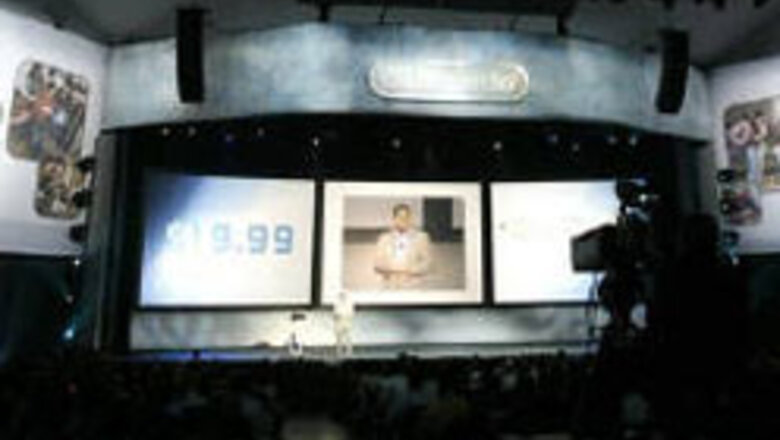
views
Santa Monica (California): Video game companies are hungrily eyeing the millions of people for whom mowing down alien invaders or battling ninjas holds limited appeal.
The video game industry's annual expo is always a showcase for testosterone-filled fighting and driving titles, but this year the word on the lips of many executives is 'casual.'
Driven by the runaway success of Nintendo Co. Ltd.'s motion-controlled Wii console, makers are pumping out games to play for a few minutes or on the run, such as puzzles and virtual card games - to the extent that some analysts worry the industry may be spreading itself too thinly.
"There may be a 'casual' glut by 2008," UBS analyst Ben Schachter wrote in a note to clients.
Kathy Vrabeck, head of the newly formed casual games unit at top publisher Electronic Arts Inc., said in an interview that "it's a very difficult business model," given a variety of platforms, from cell phones to consoles, for instance.
But EA devoted almost its entire media briefing at the E3 expo in Santa Monica, California this week to showing off new casual games such as Wii rhythm title "Boogie."
"We believe it's going to be the fastest-growing area within all of gaming," Vrabeck said.
UbiSoft, Europe's biggest publisher known for its slate of realistic military games, also lingered on the casual theme, showing off titles meant to appeal to women, such as "My Life Coach" for Nintendo's DS handheld.
The company expects casual games to account for 20 per cent of its revenue this year, double last year's figure.
"It's not the better graphics, it's not the fancy controllers. What we're talking about is widening the nets, bringing more people into our industry," said Tony Key, UbiSoft's vice president of US marketing.
The industry, whose global revenue topped $30 billion last year, has tried for years to shake the stereotype that its consumers consist chiefly of teen-age boys with too few social skills and too much leisure time.
Yet the Entertainment Software Association puts the age of the average game player at 33 years, and says 24 per cent of players are over the age of 50.
That's almost as much as the portion under the age of 18 - 28 per cent.
PAGE_BREAK
The surge of interest in casual games is partly the result of shifting economics that have pressured the bottom lines of many firms.
An A-list title for new gaming consoles from Microsoft Corp. and Sony Corp. can now take four years to make and cost $30 million, two to three times the cost of games for the previous generation of machines.
Yet retail prices have only risen 20 per cent, to $60 for a newly released top title.
Moreover, publishers' hopes that gamers would rush to adopt new hardware were dashed by the high cost of the consoles.
Fewer consoles in homes meant a smaller base of potential game buyers, and thus weaker sales of those costly new games.
By contrast, casual games, with their simpler graphics and controls, can cost well under $1 million and take just a few months to make.
Although they might sell for as little as $5 to $30, they appeal to a broader audience.
Casual games also have their own set of challenges.
While much of the focus has been on the Wii and DS due to their popularity, mobile phone and online games strongly appeal to women and older players.
A single mobile phone game may need to be tweaked to run on up to 300 different handset models, and unlike hard-core gamers who don't blink at spending hundreds of dollars a year on the newest games, the casual audience may not become repeat customers.
"Nintendo seems to be the one company that's expanding the gaming market, but there's some cause for concern there because who they're attracting is the casual gamer," said Van Baker, an analyst with research firm Gartner.
"That's something that someone picks up and does for 15 to 20 minutes and then they put it aside. The question is, in three months or six months, is the Wii going to be sitting in the corner forgotten?"
















Comments
0 comment